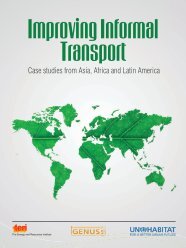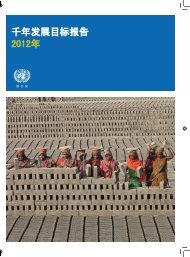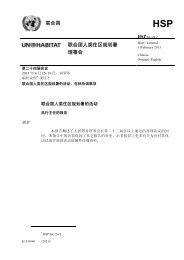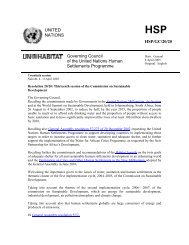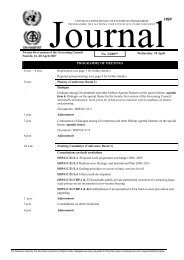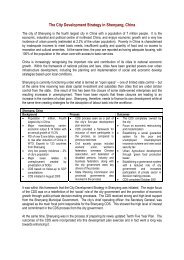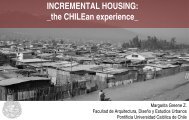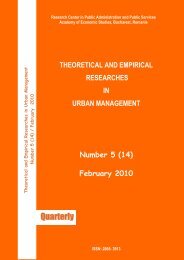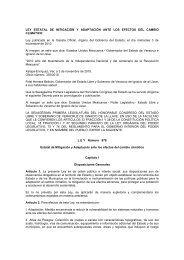Harmonious cities - UN-Habitat
Harmonious cities - UN-Habitat
Harmonious cities - UN-Habitat
You also want an ePaper? Increase the reach of your titles
YUMPU automatically turns print PDFs into web optimized ePapers that Google loves.
COVER STORY The century of the city<br />
2007 (Thousands ) 2025 (Thousands)<br />
1 Tokyo 35,676 1Tokyo 36,400<br />
2 Mexico City 19,028 2Mumbai 26,385<br />
3 New York-Newark 19,040 3Delhi 22,498<br />
4 São Paulo 18,845 4Dhaka 22,015<br />
5 Mumbai 18,978 5São Paulo l<br />
21,428<br />
6 Delhi 15,926 6 Mexico City 21,009<br />
7 Shanghai 14,987 7New York-Newark 20,628<br />
8 Kolkata 14,787 8 Kolkata 20,560<br />
9 Buenos Aires 12,795 9 Shanghai 19,412<br />
10 Dhaka<br />
Los Angeles-Long -L Beach-<br />
13,485 10Karachi19,095 11 Santa Ana 12,500 11 Kinshasa 16,762<br />
12 Karachi 12,130 12Lagos15,796 13 Rio de Janeiro 11,748<br />
13Cairo15,561<br />
14 Osaka-Kobe 11,294 14Manila<br />
14,808<br />
15 Cairo 11,893 15Beijing14,545 16 Beijing 11,106 16 Buenos Aires<br />
Los Angeles-Long Beach-<br />
13,768<br />
17 Manila 11,100 17 Santa Ana 13,672<br />
18 Moscow 10,452 18 Rio de Janeiro 13,413<br />
19 Istanbul 10,061 19<br />
Jakarta 12,363<br />
20 Istanbul 12,102<br />
21 Guangzhou, Guangdong 11,835<br />
22 Osaka-Kobe 11,368<br />
23 Moscow 10,526<br />
24 Lahore 10,512<br />
25 Shenzhen 10,196<br />
Source: : <strong>UN</strong> Population Division, , World Urbanisation Prospects, 2007<br />
Note: Population are for urban agglomeration, not city proper.<br />
: new mega<strong>cities</strong><br />
24<br />
Urban and City Gini Coefficients in Latin America<br />
and the Caribbean<br />
Population of the world’s mega<strong>cities</strong>, 2007 and 2025<br />
u r b a n<br />
WORLD<br />
November 2008<br />
Ring towns, or satellite <strong>cities</strong>, have sprung up in<br />
Mumbai due to shifting populations<br />
Ph o t o © ASi f Ak B A r<br />
where ring towns or “bedroom communities”<br />
have formed around <strong>cities</strong> like New Delhi and<br />
Mumbai. Urban growth patterns in China, on<br />
the other hand, have tended to produce “city<br />
regions” along the eastern coastal belt, which<br />
are responsible for much of the economic<br />
growth experienced by the country in recent<br />
years. In countries like the Philippines and<br />
Indonesia, the trend has been to promote the<br />
growth of intermediate <strong>cities</strong> in order to direct<br />
migrants away from the largest city.<br />
Latin America and the Caribbean is the<br />
most urbanised region in the developing<br />
world, with one-fifth of the region’s urban<br />
residents living in <strong>cities</strong> with populations of<br />
five million or more. However, one of the most<br />
distinctive features of urbanisation in the region<br />
is the rapid growth of small <strong>cities</strong>, which<br />
are home to nearly 40 percent of the region’s<br />
urban population. Another distinctive characteristic<br />
of Latin America and the Caribbean<br />
is that urban growth is often the result of people<br />
moving from one city to another, and not<br />
from rural areas to urban areas. u<br />
Source: <strong>UN</strong>-HABITAT, State of the World’s<br />
Cities 2008/9.




